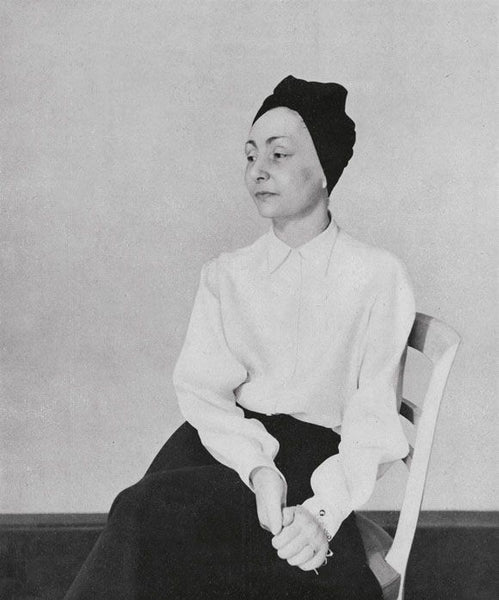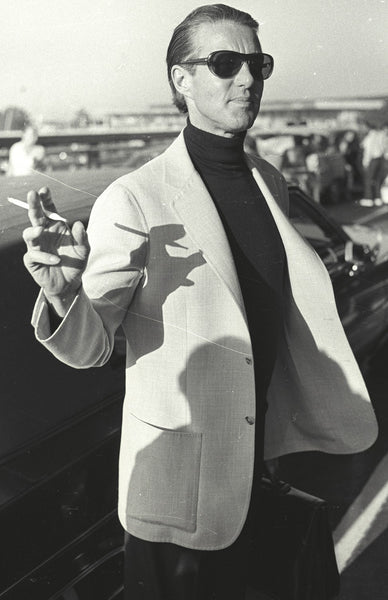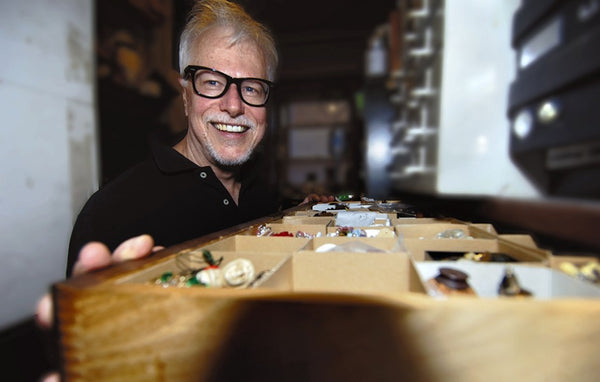Designer Spotlight: Jeanne Lanvin

Jeanne Lanvin began working in fashion at a very young age, first as an errand girl at a dressmakers, then later as an apprentice milliner. In 1885, at the age of 18, she gathered her savings and opened her first store in rue du Marche Saint Honore in 1885. This small millinery workshop would be Lanvin’s first stepping stone in the creation of a fashion empire that endures till this day.
Lanvin’s loyal clients would time and time again come in to the store and see Marguerite, her young daughter, garbed in magnificent dresses (which often matched Lanvin’s own); eventually these clients requested she make their own clothes, which lead to Lanvin’s long awaited entry into womenswear. In 1909 Lanvin opened a Young Ladies’ and Women’s department and joined the Syndicat de la Couture.

Jeanne Lanvin and Models, 1935, 1940
By 1920, Lanvin employed 1200 people; she placed herself at the front lines of fashion, becoming one of the first designers to present four collections (consisting of around 200 looks) a year. She understood the changing position of women in the early 20th century, and sought to cater to her clients needs, providing pieces for all ages, all body types, and all occasions. The 1920s were a time of great sartorial change - lengths, silhouettes, fabrics, and social norms were changing. Jeanne Lanvin sought to harness the chaos of the era, curating her client’s appearance to perfection and making social chameleons of them all. While Coco was simplifying designs, Lanvin was amplifying and romanticizing.

Lanvin was very much a part of the zeitgeist, creating deco designs, but she also drew inspiration from her travels to Africa, Asia, and the Americas, with particular devotion to the stylized romantic portrayals of antiquity. She was also inspired by history, particularly the medieval age and the renaissance. Her favorite color was Fra Angelico blue (now better known as Lanvin Blue), a color she had discovered during a trip to Florence in the early 1920s. Lanvin also adored and frequently used Velazquez green, Polignac pink, and black.

Lanvin understood the sporty, slender, and straight silhouette of the 1920s, and helped popularize milliner Caroline Reboux’s cloche with the bob-haired Parisian elite. Contrarily, she also created the Robe de Style, a dress with fitted (or sometimes box cut) bodice and a voluminous skirt. The robe de style was an elegant, voluminous alternative to the straight sided chemise dress, offering wearers a looser, romantic silhouette with a tinge of shimmering ephemerality. In the 1930s Lanvin reworked the Robe de Style, adding a structure Velazquez-like panniered skirt.

Lanvin would also on occasion shock and awe, like in 1938 when she designed a hat that appeared to be a chicken roosting - a fun nod to Elsa Schiaparelli, her surrealist contemporary.

Although already successful, Lanvin was bolstered in the 1930s when Queen Elizabeth commissioned party dresses for her two daughters, princesses Elizabeth and Margaret. Lanvin, a doting mother herself, gifted the princesses two dolls dresses in identical dresses, sending them out with the order. Lanvin later extended this gift to all her clients requesting girl’s fashions.

Lanvin Arpège bottle and enamel clutch
Lanvin diversified, releasing cosmetics, perfumes, pret-a-porter, sportswear, fur, hosiery, and housewares designed by Armand Albert Rateau, who had designer her home in Paris, her villa, and her shops. Rateau also designed the famous Arpège perfume bottle in 1927. The perfume was a birthday gift from Lanvin to her daughter, and features the famous Paul Irbe illustration depicting the mother - daughter duo dancing in coordinating ensembles. The Irbe illustration served as the Lanvin logo for many years.

Jeanne & Marguerite, Irbe Logo
Nicole Maria Willis 1.4.19
Also in Adore MRS. Couture

Designer Spotlight: Madame Gres

Designer Spotlight: Roy Halston Frowick
Halston was thrown into the limelight when Jacqueline Kennedy wore his pillbox hat to John F. Kennedy’s inauguration. Soon Halston expanded into women’s wear, creating both couture and ready-to-wear fashion catering to the fashionable and elite jet set. Halston also accepted the honor of designing the 1976 US Olympic team uniforms, redesigned Braniff Airlines’ uniforms in 1977, and created uniforms for the New York Police Department and the Girl Scouts in 1978.
Halston was innovative, using slinky knit material and ultrasuedes, and introducing a halter dress design that elongated a wearer’s silhouette. He pioneered the sensual and soft draped looks associated with disco and his beloved Studio 54.

